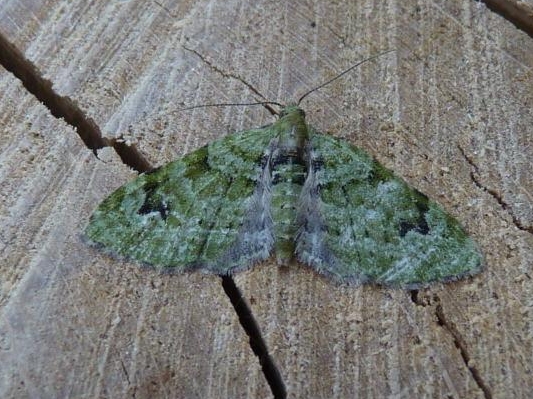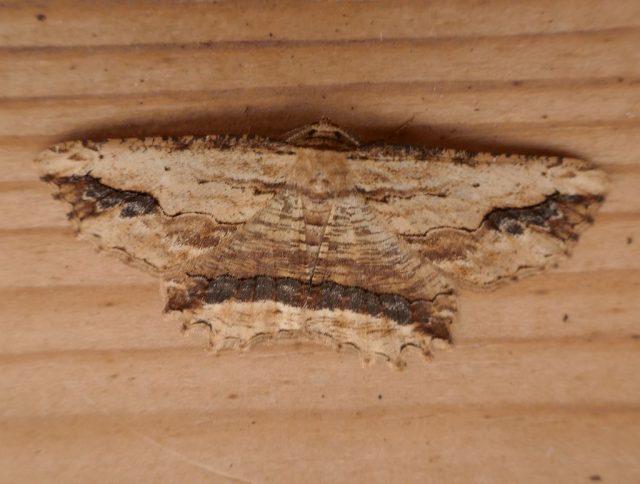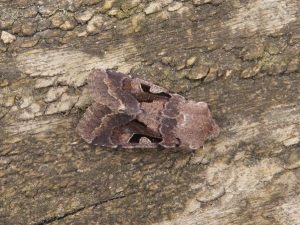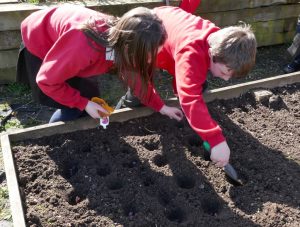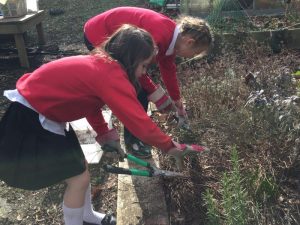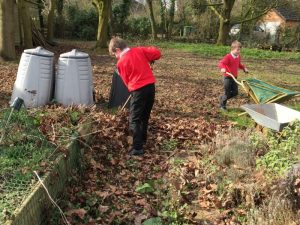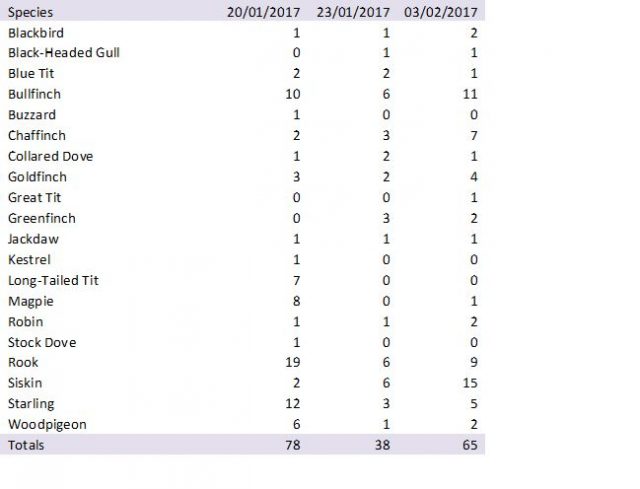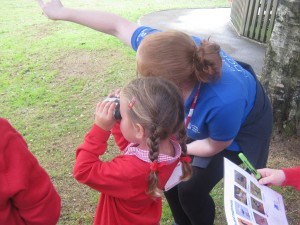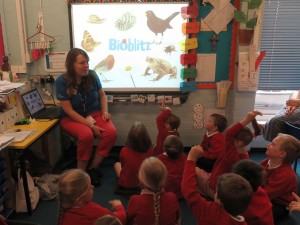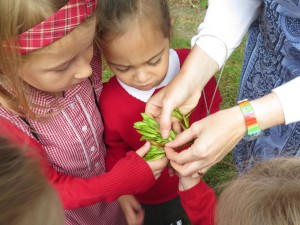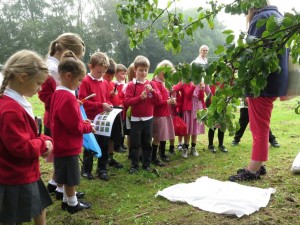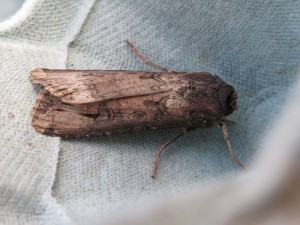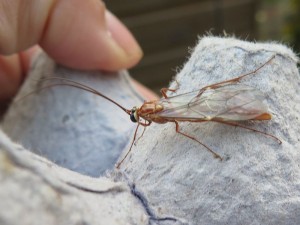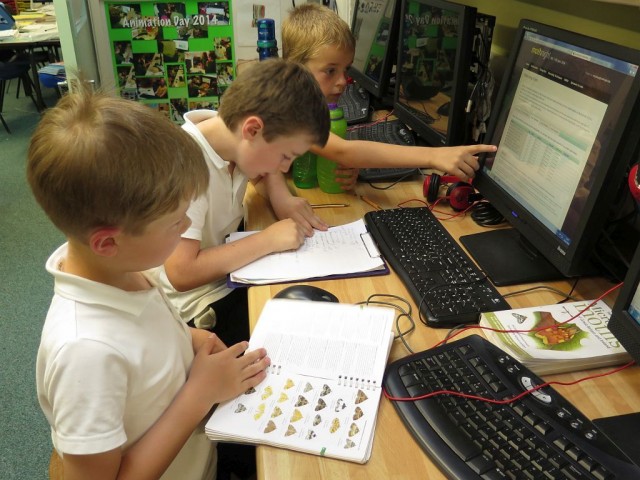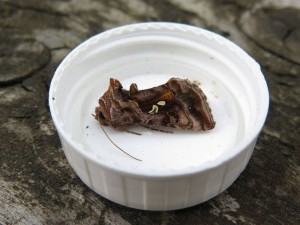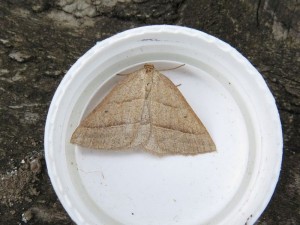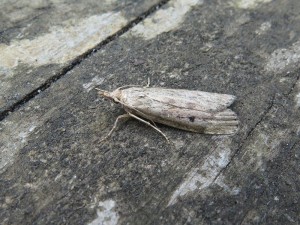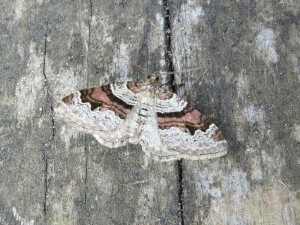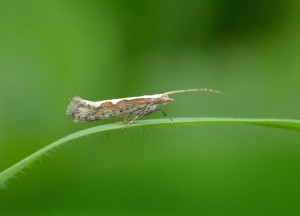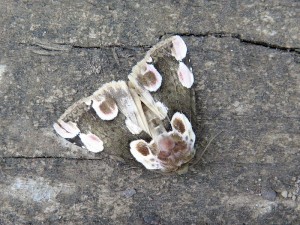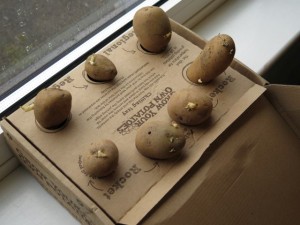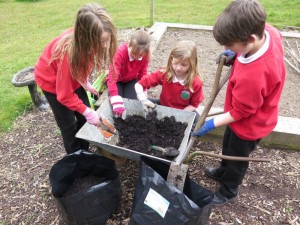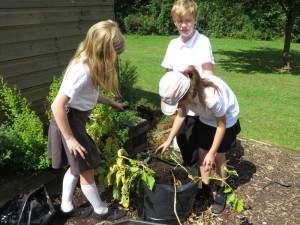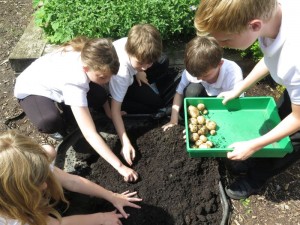The moth trap was set up on the evening of 27th April and emptied the following morning. There were 5 moths of 3 different species:
Clouded Drab 3, Hebrew Character 1 and V-pug 1 (New for school grounds).
Today we sowed runner beans to sell later this term. They will cost 20p per plant!

The moth trap was set up on the first time this year on the evening of 6th April and emptied the following morning. Mr Marriot kindly covered up the trap when he arrived in the morning so that our resident rooks couldn’t breakfast on our catch!
Nine moths of four different species were trapped, two of which were new species (shown in bold) for the school grounds:
1 Early Grey, 2 Clouded Drab, 5 Hebrew Character, 1 Shoulder Stripe.
- Clouded Drab
- Hebrew Character
- Early Grey
- Shoulder Stripe
Four members from Peregrine Class planted around 150 onions, some red and some white. We hope that Sue will cook us some delicious meals with them!
Thank you Peregrine Class for all your hard work this afternoon chopping back the Buddleia bushes, cutting back old flowering stems in the herb garden, sweeping up leaves and harvesting the last of the leeks and beetroot.
This year’s RSPB Big School’s Birdwatch was carried during January and February. We have taken part in this national survey for the last nine years. Each class completed one survey with all children having the opportunity to take part. The surveys lasted one hour during which time we counted the maximum number of each species seen together (i.e. not individual visits).
This year we counted 181 birds over 3 surveys and recorded 19 different species.
Thank you to Peregrine Class for inputting all the data into an Excel spreadsheet and generating a bar chart showing the results.
The number of birds and species was slightly down this year and disappointingly, it was the first year that Tree Sparrows weren’t recorded. However, good numbers of Bullfinch were recorded and we were also treated to fly overs from a Buzzard and a Kestrel.
On September 15th, members of the RSPB visited to work with the children to investigate the wide variety of flora and fauna in the school grounds. Each class worked on a range of activities including bird watching, mini beast hunting and the identification of trees. Older children have since uploaded some of the wildlife photos taken to our ispot account as record of what we saw or for identification purposes. Year 6 children also emptied and recorded moths which were caught in the moth trap set up the night before.
The moth trap was set up on the evening of October 19th. A fairly chilly night followed, with a moon just past full, so only one moth was found in the trap in the morning. However, the Dark Sword-grass moth was a new species for the garden. In addition, there were several crane flies and a large red ichneumon wasp.
- Dark Sword-grass moth
- Crane flies
- Ichneumon wasp
This year’s annual celebration of moth recording in the UK, Moth Night, took place over three nights (9th-11th June). We put a moth trap out in the school’s Learning Garden for the Thursday night (9th June) and Year 3 children emptied the trap the following morning. The evening and night had been quite warm (minimum temperature 15ºC) so we were rewarded with a good catch; forty-five moths were trapped and twenty-one different species identified. The children entered the results on the Moth Night web site (http://www.mothnight.info).
Small Clouded Brindle 1, Pale Tussock 3, Diamond-back Moth 10, Brown Silver-line 1, Small Phoenix 1, Silver-ground Carpet 1, Silver Y 1, Grass Rivulet 1, Small Square-spot 1, Flame 1, Common Carpet 2, White Ermine 2, Ingrailed Clay 2, Water Carpet 1, Middle-barred Minor 3, Beautiful Golden Y 1, Bee Moth 3, Common Pug 1, Green Carpet 3, Common Swift 5 and Meadow Grey 1. We also caught 2 big Black Sexton Beetles.
- The Flame
- Beautiful Golden Y
- Brown Silver-line
I set up a moth trap, by the hide in our Learning Garden, on the evening of 5th June and a couple of children helped me record the moths trapped during Monday break-time. Normally we would empty the trap much earlier so any moths that had settled outside the trap will have flown off. We found 8 different species of moth:
- Bee Moth
- Common Swift
- Flame Carpet
- Pale Tussock
- Silver-ground Carpet
- Water Carpet
- White Ermine
- Diamond-back Moth
- Peach Blossom (from Pleasley Pit)
2 Bee Moths, 1 Pale Tussock, 1 Water Carpet, 1 Common Swift, 1 Silver-ground Carpet, 2 White Ermine, 1 Flame Carpet, 1 Diamond-back Moth. In addition, I also showed the children a moth I had caught the previous night at Pleasley Pit, a Peach Blossom.
Although we didn’t have any nesting birds in either of our two bird boxes with cameras, at least three other boxes are known to have had Blue Tit chicks in them. Adult birds were seen going into the Car Park box and one of the Silver Birch boxes with food before half term, at the end of May, but both boxes were empty by the time we returned to school on 6th June. Adult Blue Tits were seen taking food to some very noisy chicks in the box by the backdoor on Sunday evening, 5th June. By Monday morning, only one chick could be heard calling from the box and this too had fledged by breaktime.
The school bird boxes were cleaned out at the beginning of the year, thank you Mr Marriot! It was a disappointing year last year with no birds nesting in our birdcam boxes for the first time in 7 years. However, full nests were found in the Car Park box (Blue tits) and all three compartments of one of the sparrow terraces. Some of the boxes had evidence of roosting birds.
The camera in the colour birdcam box has been left on for the Easter holidays so leave comments if you spot any visitors.
Last week we received our free growing kit for “Potatoes 4 Schools”. Over the next few months we will be chitting, planting, growing and, hopefully, harvesting our potatoes.
- Stage 1: Chitting – 4th March
- Stage 2: Planting into sacks 23rd March
- Stage 3: Growing! – June 13th
- Ready for harvest
- Harvesting
- Weighing
- Record of harvest
We started with eight seed potatoes and harvested 105!
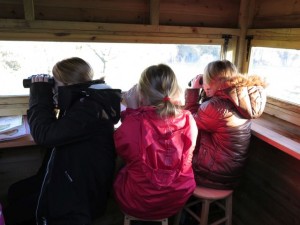 This year’s RSPB Big School’s Birdwatch was carried during January and February. We have taken part in this national survey for the last eight years. Each class completed one survey with all children having the opportunity to take part. The surveys lasted one hour during which time we counted the maximum number of each species seen together (i.e. not individual visits).
This year’s RSPB Big School’s Birdwatch was carried during January and February. We have taken part in this national survey for the last eight years. Each class completed one survey with all children having the opportunity to take part. The surveys lasted one hour during which time we counted the maximum number of each species seen together (i.e. not individual visits).
This year we counted 205 birds over 3 surveys and recorded 22 different species.
Thank you Peregrine Class for inputting all the data into Excel and presenting them in a chart!
| Species | Class 1 – 15th Jan | Class 2 – 15th Jan | Class 3 – 5th Feb |
| Blackbird | 3 | 4 | 3 |
| Blue tit | 3 | 2 | 1 |
| Bullfinch | 15 | 13 | 7 |
| Chaffinch | 3 | 4 | 4 |
| Collarded Dove | 4 | 3 | 3 |
| Goldfinch | 4 | 3 | 18 |
| Great tit | 1 | 2 | 1 |
| Greenfinch | 0 | 0 | 4 |
| Jackdaw | 2 | 0 | 0 |
| Magpie | 2 | 1 | 2 |
| Mistle thrush | 0 | 0 | 2 |
| Redpoll | 0 | 2 | 0 |
| Redwing | 0 | 1 | 1 |
| Robin | 1 | 1 | 1 |
| Rook | 10 | 5 | 15 |
| Siskin | 3 | 0 | 0 |
| Song Thrush | 0 | 1 | 1 |
| Starling | 0 | 3 | 9 |
| Tree Sparrow | 9 | 9 | 3 |
| Woodpigeon | 1 | 3 | 5 |
| Wren | 1 | 1 | 0 |
| Total Birds | 62 | 58 | 80 |

